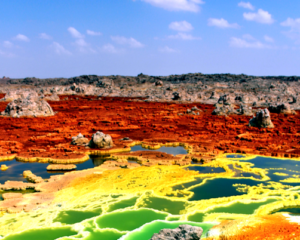Instagram has become one of the most popular social media platforms for sharing photos of travel adventures. With stunning pictures of picturesque landscapes, beautiful beaches, and iconic landmarks, Instagram has taken the travel industry by storm, inspiring wanderlust in millions of people around the world. For those seeking the next Instagram-worthy travel destination, we have compiled a list of 10 breathtaking places that are sure to add some incredible photos to your feed.
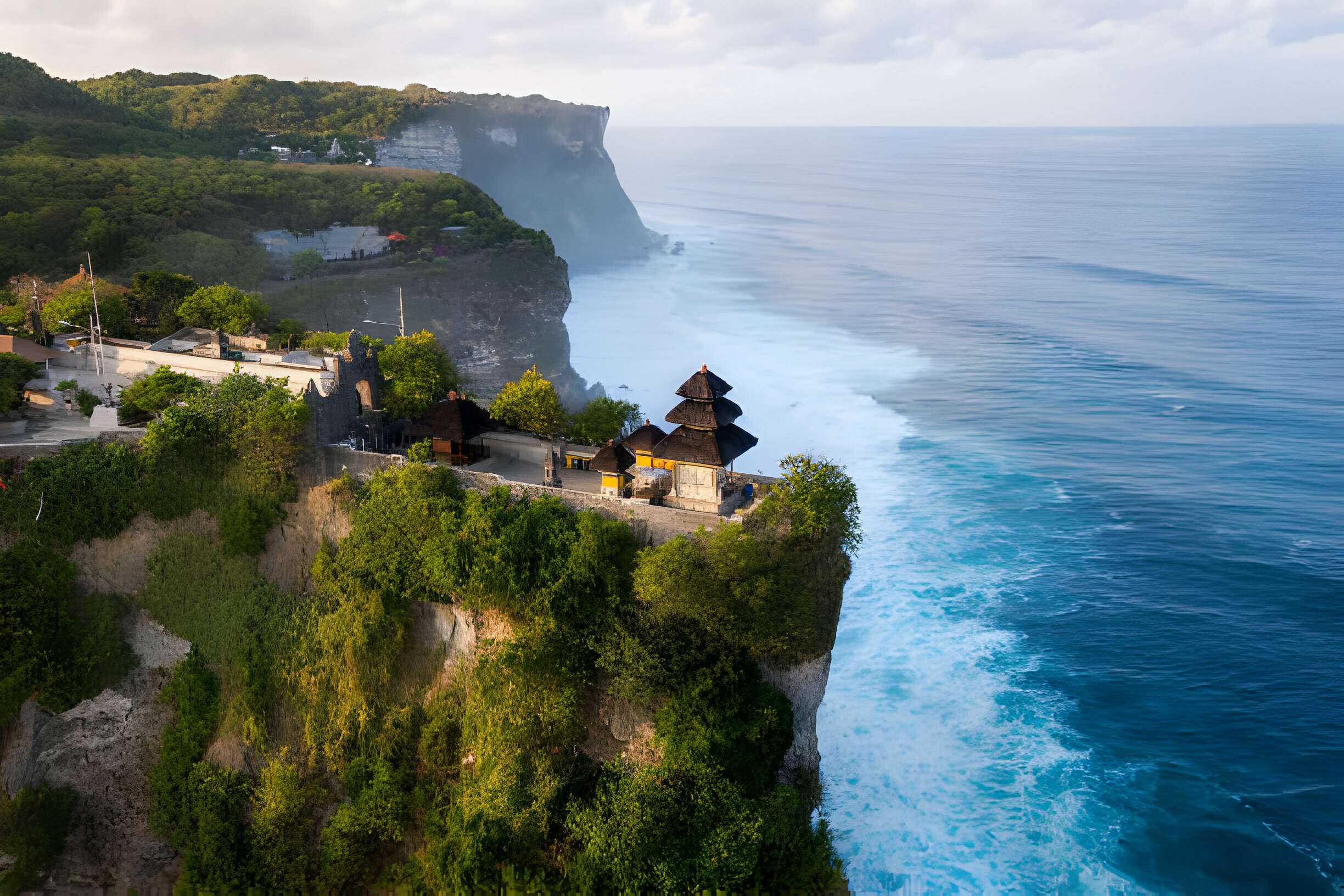 Pin
Pin Table of Contents
Santorini, Greece
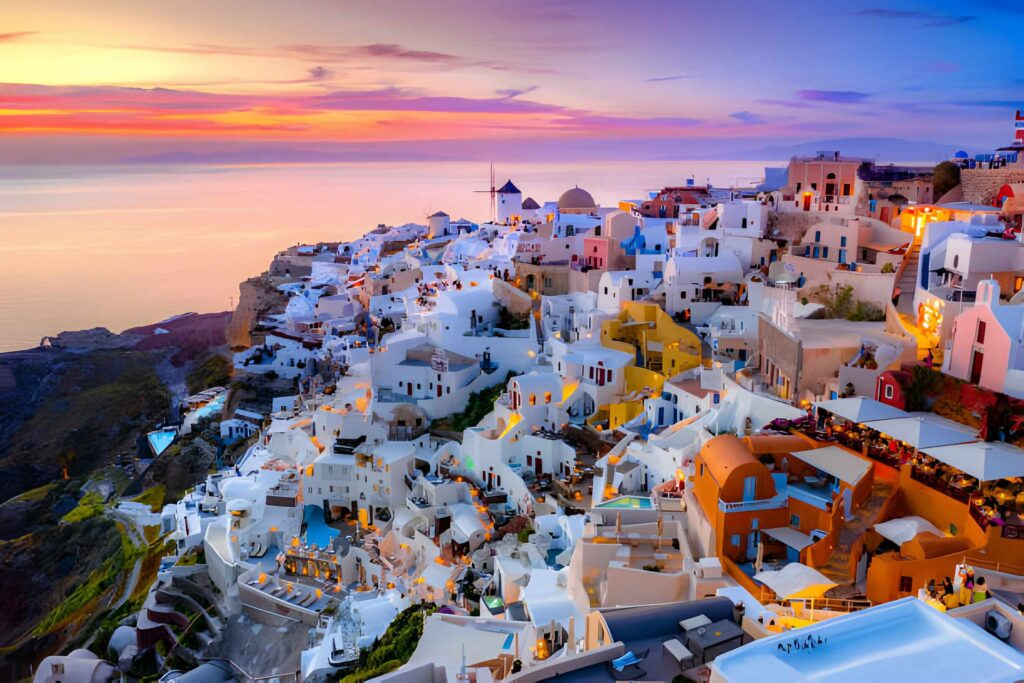 Pin
Pin Santorini is a stunning island in the Aegean Sea known for its white-washed buildings, blue domed churches, and breathtaking sunsets. The famous caldera views and crystal-clear waters provide the perfect backdrop for some stunning photos. From exploring the charming villages of Oia and Fira to enjoying the beautiful beaches and delicious Greek cuisine, Santorini is a dream destination for any Instagrammer.
Santorini, a beautiful island located in the southern Aegean Sea, is a stunning destination that captivates visitors with its breathtaking views, unique architecture, and rich history. The island is part of the Cyclades group of islands and is known for its striking landscapes, beautiful beaches, and stunning sunsets. The island’s iconic white buildings with blue domes create a picture-perfect scene that has made Santorini a popular spot for tourists, honeymooners, and travelers seeking a unique and unforgettable holiday experience.
Santorini is best known for its volcanic origins, which have shaped the island’s unique topography and stunning beauty. The island’s distinctive crescent shape is the result of a massive volcanic eruption that occurred around 3,600 years ago, causing the center of the island to collapse and resulting in the creation of a large caldera. Today, the caldera forms a dramatic backdrop for the island’s picturesque towns and villages, and its steep cliffs offer stunning panoramic views of the Aegean Sea.
One of the most popular activities for visitors to Santorini is to explore the island’s charming villages, each with its own unique character and charm. Fira, the island’s capital, is a bustling town with a lively atmosphere, offering a wide range of shops, restaurants, and cafes. The town is perched high on the caldera cliff, offering breathtaking views of the sea and the surrounding islands. Oia, another famous village on the island, is known for its iconic blue-domed churches, narrow winding streets, and stunning sunsets. Visitors can wander through the town’s labyrinthine alleys, explore its art galleries and boutique shops, and enjoy a meal at one of its many seafood restaurants overlooking the sea.
Santorini is also home to several beautiful beaches, each offering its own unique appeal. The island’s beaches are known for their volcanic black or red sand, created by the island’s volcanic history. Kamari and Perissa are two of the most popular beaches, known for their tranquil waters and scenic surroundings. The beaches are equipped with sun loungers, umbrellas, and beach bars, making them ideal for a relaxing day by the sea. Visitors can also explore the island’s secluded coves and hidden beaches, accessible only by boat, for a truly tranquil and private beach experience.
For those interested in history, Santorini offers a wealth of archaeological sites and ancient ruins to explore. The ancient city of Akrotiri, often referred to as the “Minoan Pompeii,” is one of the most important archaeological sites in the Aegean and offers a fascinating glimpse into the island’s ancient past. The city was buried under volcanic ash during the eruption around 3,600 years ago, preserving its well-preserved buildings, streets, and frescoes. The site provides an unparalleled opportunity to learn about the Minoan civilization and the impact of the volcanic eruption on the island.
Another popular attraction on the island is the ancient Thira, an ancient city located on a steep cliff. The city is home to a range of well-preserved ancient buildings, including a theater, temples, and houses, providing visitors with an opportunity to immerse themselves in the island’s rich history.
In addition to its natural beauty and historical significance, Santorini is also known for its excellent cuisine and wine. The island’s fertile volcanic soil and unique climate make it an ideal location for wine production, and visitors can take a wine tour to explore the island’s vineyards and wineries, sampling a variety of local wines along the way. The island is known for producing Assyrtiko, a crisp and citrusy white wine, as well as other varietals such as Nykteri and Vinsanto, a sweet dessert wine made from sun-dried grapes.
The island’s culinary scene is equally impressive, with its restaurants serving a variety of delicious dishes showcasing the fresh flavors of the Mediterranean. Visitors can savor traditional Greek cuisine, including freshly caught seafood, locally grown produce, and delicious mezes (appetizers) made from local ingredients. The island’s tavernas and restaurants offer an array of dining options, from casual beachside eateries to upscale fine-dining establishments, providing a diverse culinary experience for visitors.
Santorini offers a unique and unforgettable holiday experience, with its stunning landscapes, charming villages, rich history, and delectable cuisine. Whether exploring the island’s archaeological sites, lounging on its beautiful beaches, or savoring its delicious food and wine, visitors to Santorini are sure to be captivated by its beauty and charm. With its iconic white buildings, blue-domed churches, and breathtaking sunsets, Santorini is a destination that truly lives up to its reputation as one of the most beautiful and romantic islands in the world.
Bali, Indonesia
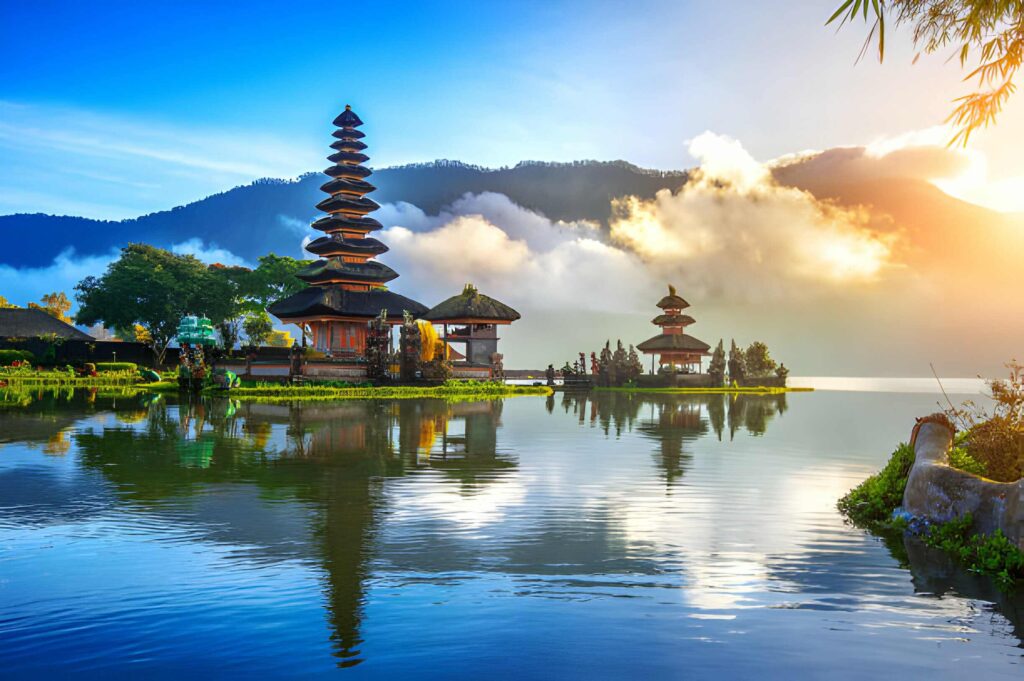 Pin
Pin Bali is a tropical paradise known for its lush rice terraces, stunning waterfalls, and vibrant culture. The island offers a wide variety of Instagram-worthy spots, from the iconic rice terraces of Tegallalang to the towering cliffs of Uluwatu. With its beautiful beaches, picturesque temples, and luxurious resorts, Bali is a must-visit destination for any travel influencer.
Bali, Indonesia is a popular tourist destination known for its beautiful beaches, rich culture, and stunning natural landscapes. Located in the Indian Ocean, Bali is part of the Indonesian archipelago and is known for its unique blend of traditional Balinese culture, Hindu temples, and modern amenities. The island is a favorite among travelers for its tropical climate, vibrant nightlife, and diverse range of activities and attractions.
The capital city of Bali is Denpasar, which is located in the southern part of the island. Denpasar is a bustling city that offers a mix of modern and traditional attractions. Visitors can explore the city’s vibrant markets, traditional Balinese architecture, and historic landmarks such as the Pura Blanjong Temple and the Bajra Sandhi Monument. In Denpasar, travelers can also find a variety of restaurants, bars, and clubs where they can experience the local cuisine and nightlife.
One of the most popular attractions in Bali is the island’s stunning beaches. With its crystal-clear waters and golden sands, Bali’s beaches offer the perfect setting for sunbathing, swimming, and water sports. Some of the most popular beaches on the island include Kuta Beach, Seminyak Beach, and Uluwatu Beach. These beaches are also known for their lively atmosphere, with a variety of beach bars, restaurants, and shops lining the shore.
In addition to its beaches, Bali is also home to a number of natural wonders that are well worth exploring. The island is surrounded by lush, tropical forests, towering mountains, and cascading waterfalls. Visitors can take part in a range of outdoor activities such as hiking, trekking, and wildlife spotting. Some of the most popular natural attractions in Bali include the Tegallalang Rice Terraces, Mount Batur, and the Gitgit Waterfall.
Bali is also known for its rich cultural heritage, which is evident in its many temples and religious sites. The island is predominantly Hindu, and visitors can explore a number of ornate temples and shrines that are scattered throughout the region. The most famous of these is the Pura Besakih Temple, which is often referred to as the “Mother Temple of Bali” and is considered the most important temple on the island. Other notable temples include the Tanah Lot Temple, the Uluwatu Temple, and the Tirta Empul Temple, all of which offer stunning architecture and breathtaking views.
In addition to its natural and cultural attractions, Bali is also known for its vibrant arts scene. The island is home to a number of talented artists, musicians, and performers who showcase their work in galleries, theaters, and traditional Balinese ceremonies. Visitors can take part in cultural activities such as traditional dance performances, gamelan music concerts, and art workshops, which allow them to immerse themselves in the local culture and traditions.
Bali also offers a wide range of dining options, with a variety of restaurants serving up traditional Balinese cuisine as well as international dishes. Visitors can sample local specialties such as babi guling (suckling pig), nasi goreng (fried rice), and sate (grilled meat skewers), as well as fresh seafood and exotic fruits.
The island also has a lively nightlife scene, with plenty of bars, nightclubs, and beach parties where visitors can enjoy live music, DJs, and dancing until the early hours of the morning.
When it comes to accommodation, Bali offers a diverse range of options to suit every budget and preference. Visitors can choose from luxury resorts, boutique hotels, beachfront villas, and budget-friendly guesthouses, all of which offer comfortable and convenient lodging options. Many of the island’s accommodations also feature world-class amenities such as swimming pools, spas, and restaurants, as well as spectacular views of the surrounding landscapes.
In recent years, Bali has also become a popular destination for wellness and relaxation. The island is known for its holistic healing practices, yoga and meditation retreats, and spa resorts that offer a range of wellness treatments and therapies. Visitors can indulge in traditional Balinese massages, herbal body scrubs, and cleansing rituals, as well as take part in wellness workshops and classes that focus on meditation, mindfulness, and holistic health.
Bali offers a unique and unforgettable travel experience, with its beautiful beaches, rich culture, and diverse range of activities. Whether visitors are looking for a relaxing beach vacation, an adventure-packed getaway, or an immersive cultural experience, Bali has something to offer for every type of traveler. With its stunning natural landscapes, vibrant arts scene, and warm and welcoming locals, Bali is a destination that truly captures the imagination and leaves a lasting impression on all who visit.
Machu Picchu, Peru
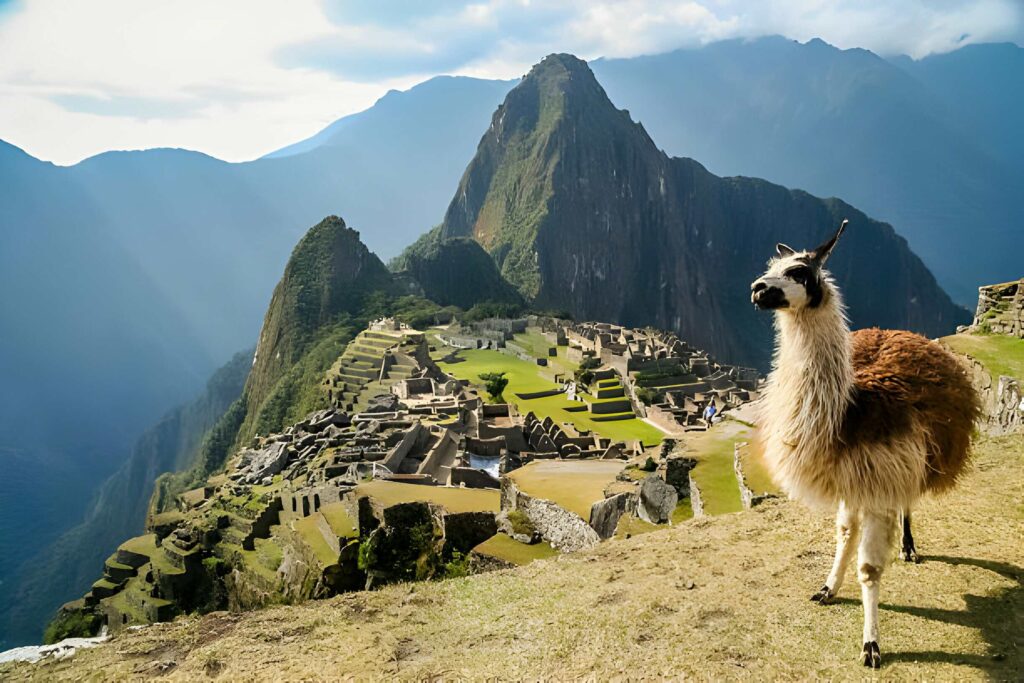 Pin
Pin Machu Picchu is an ancient Incan citadel nestled high in the Andes Mountains of Peru. This UNESCO World Heritage site is a photographer’s paradise, offering stunning views of the surrounding mountains and the iconic stone ruins of the ancient city. Whether you hike the Inca Trail or take the train to Aguas Calientes, a visit to Machu Picchu is guaranteed to result in some incredible Instagram shots.
Machu Picchu is a world-renowned archaeological site located in the Andes Mountains of Peru. It is often referred to as “The Lost City of the Incas” and is a testament to the advanced engineering and architectural skills of the Inca civilization. The site is perched high atop a mountain ridge at an elevation of nearly 8,000 feet, and its remote location provides stunning views of the surrounding valleys and peaks.
Machu Picchu was built by the Inca emperor Pachacuti in the 15th century, and it is believed to have been used as a royal estate or religious retreat. The site is composed of over 200 structures, including temples, palaces, and homes, all constructed with incredible precision using massive stone blocks that fit together without the use of mortar. The engineering feats of Machu Picchu are particularly impressive given the site’s remote and rugged location.
Machu Picchu is divided into two main sections: the agricultural sector and the urban sector. The agricultural sector features terraced fields and irrigation systems that allowed the Inca to grow crops such as corn, potatoes, and quinoa in the steep mountain terrain. The urban sector includes the Temple of the Sun, the Intihuatana stone, and the Room of the Three Windows, all of which were likely used for religious and ceremonial purposes.
One of the most iconic features of Machu Picchu is the Intihuatana stone, a carved granite rock that served as an astronomical observatory. The stone is positioned so that its corners align with the cardinal points of the compass, and during the winter solstice, the sun casts no shadow at midday, indicating the beginning of the Inca New Year. This alignment is just one example of the Inca’s sophisticated understanding of astronomy and their ability to integrate it into their architectural designs.
In addition to its historical and architectural significance, Machu Picchu is also celebrated for its stunning natural setting. The site is surrounded by lush, green mountains that seem to rise up from the valley below, and the meandering Urubamba River adds to the breathtaking scenery. The site itself is also home to a diverse range of flora and fauna, including orchids, hummingbirds, and the rare Andean spectacled bear.
The combination of Machu Picchu’s historical and natural beauty has led to its designation as a UNESCO World Heritage Site, as well as one of the New Seven Wonders of the World. Its status as a must-see destination has made it one of the most visited sites in South America, drawing millions of visitors each year.
Despite its popularity, Machu Picchu has faced several challenges in recent years, including concerns about overtourism and the preservation of the site’s fragile structures. In 2016, UNESCO placed Machu Picchu on its list of World Heritage in Danger due to the potential negative impact of tourism on the site. In response, the Peruvian government has implemented measures to limit the number of visitors per day and to protect the site from erosion and other forms of damage.
Visitors to Machu Picchu have a variety of options for experiencing the site, including hiking the Inca Trail, taking a train from the nearby town of Aguas Calientes, or boarding a bus that winds its way up the steep mountain road. Once at the site, visitors can explore the ruins at their own pace, taking in the stunning views and learning about the history and culture of the Inca civilization through guided tours and informational signage.
For those interested in a more immersive experience, the nearby town of Aguas Calientes offers a range of accommodations, restaurants, and markets, providing a convenient base for exploring Machu Picchu and the surrounding area. The town also serves as a gateway to the larger region of Cusco, which was once the capital of the Inca Empire and is home to numerous other archaeological sites and cultural attractions.
Machu Picchu stands as a testament to the ingenuity and craftsmanship of the Inca civilization, as well as a stunning example of the beauty of the Andes Mountains. Its status as a UNESCO World Heritage Site and one of the New Seven Wonders of the World has cemented its reputation as a must-see destination for travelers from around the globe. While challenges related to preservation and overtourism persist, the Peruvian government and various stakeholders continue to work to ensure that Machu Picchu can be enjoyed by future generations. A visit to Machu Picchu is not only an opportunity to witness a remarkable archaeological site, but also a chance to connect with the rich history and natural beauty of Peru.
The Maldives
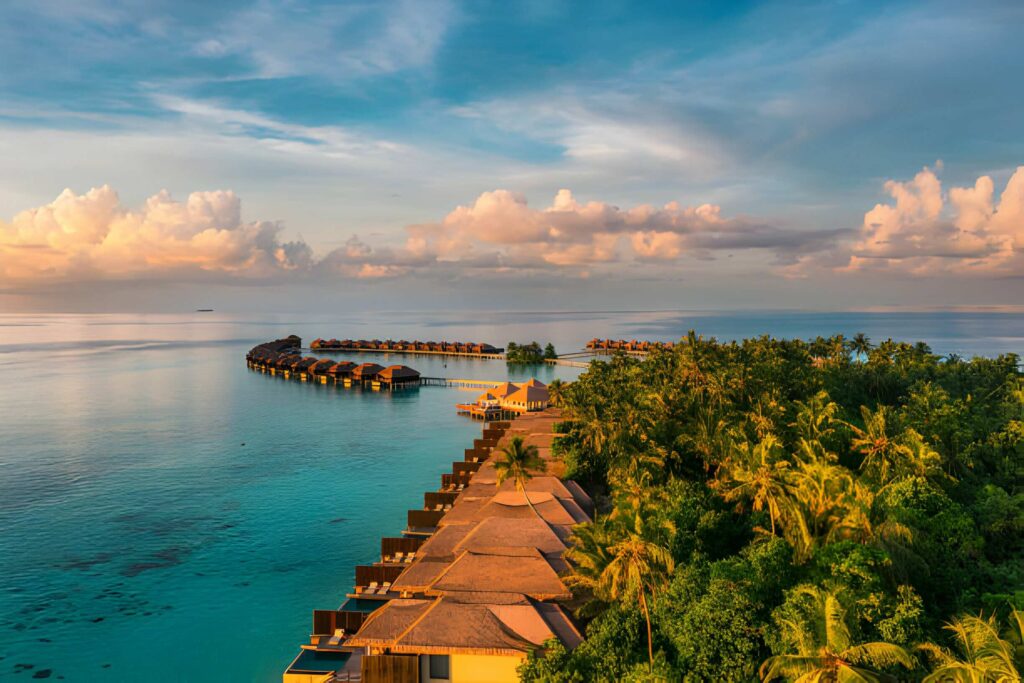 Pin
Pin The Maldives is a tropical paradise made up of 26 atolls and over 1,000 coral islands, famous for its luxurious overwater villas, stunning blue lagoons, and crystal-clear waters. With its picture-perfect beaches, vibrant marine life, and breathtaking sunsets, the Maldives is an ideal destination for capturing some envy-inducing photos for your Instagram feed.
The Maldives is an archipelago of 26 atolls located in the Indian Ocean, southwest of Sri Lanka and India. It is known for its stunning turquoise waters, white sandy beaches, and diverse marine life, making it a popular destination for travelers seeking a tropical paradise. With its unique geography and rich culture, the Maldives offers a wide range of attractions and activities for visitors to enjoy.
The Maldives is a tropical paradise, with a warm and humid climate year-round. The temperature ranges from 24°C to 33°C, and the country experiences two distinct seasons: the dry season from December to April and the wet season from May to November. Despite the wet season, the Maldives is still a popular destination for tourists due to its warm and tropical climate.
The Maldives is home to an abundance of marine life, including colorful coral reefs, exotic fish, turtles, and even whale sharks. With over 1,000 species of fish and 200 species of coral, the Maldives is a haven for snorkeling and diving enthusiasts. The clear waters and diverse marine life make it an ideal destination for underwater activities, and many resorts offer diving and snorkeling excursions for visitors to explore the underwater world.
In addition to its natural beauty, the Maldives also has a rich and unique culture. The Maldivian people are warm and welcoming, and they take pride in their traditions and customs. The Maldives has a predominantly Muslim population, and Islam plays a significant role in everyday life. Visitors to the Maldives can experience traditional Maldivian customs and rituals, such as the Bodu Beru, a traditional drumming performance, and the Dhoni, a traditional Maldivian boat.
The Maldives is also famous for its luxury resorts and overwater bungalows. These resorts offer a unique and luxurious experience, with stunning views of the ocean, private plunge pools, and personalized service. Many visitors to the Maldives choose to stay in overwater bungalows to enjoy the beauty of the ocean and the tranquility of the surroundings.
One of the most popular activities in the Maldives is water sports, including jet-skiing, parasailing, and windsurfing. The calm and clear waters of the Maldives make it an ideal destination for water sports enthusiasts, and many resorts offer a wide range of water-based activities for visitors to enjoy. In addition to water sports, visitors can also enjoy other activities such as island hopping, sunset cruises, and dolphin watching.
The Maldives also has a rich culinary tradition, with a focus on fresh seafood, coconut, and tropical fruits. Visitors to the Maldives can enjoy a wide range of traditional dishes, such as mas huni (shredded smoked fish with coconut and onions), garudhiya (fish soup), and bis keemiya (pastry filled with fish). The Maldives is also known for its delicious desserts, including sweetened rice and coconut sweetmeats.
The Maldives is a popular destination for honeymooners and couples looking for a romantic getaway. The serene and tranquil atmosphere, coupled with the stunning natural beauty, makes it an ideal destination for couples to relax and reconnect. Many resorts offer special packages and amenities for honeymooners, including candlelit dinners on the beach, spa treatments, and private excursions.
The Maldives is also a paradise for eco-tourism, with a strong focus on sustainability and conservation. The government and local organizations are working to preserve the natural beauty and ecological balance of the country, and many resorts have implemented eco-friendly practices to minimize their impact on the environment. Visitors to the Maldives can also take part in eco-friendly activities, such as coral reef conservation programs and beach clean-up efforts.
The Maldives is a truly unique and beautiful destination, offering a perfect blend of natural beauty, rich culture, and luxury. Whether you are a sun-seeker, an adventure enthusiast, a romantic couple, or an eco-conscious traveler, the Maldives has something to offer for everyone. With its stunning scenery, diverse marine life, and warm hospitality, the Maldives is truly a tropical paradise waiting to be explored.
Banff National Park, Canada
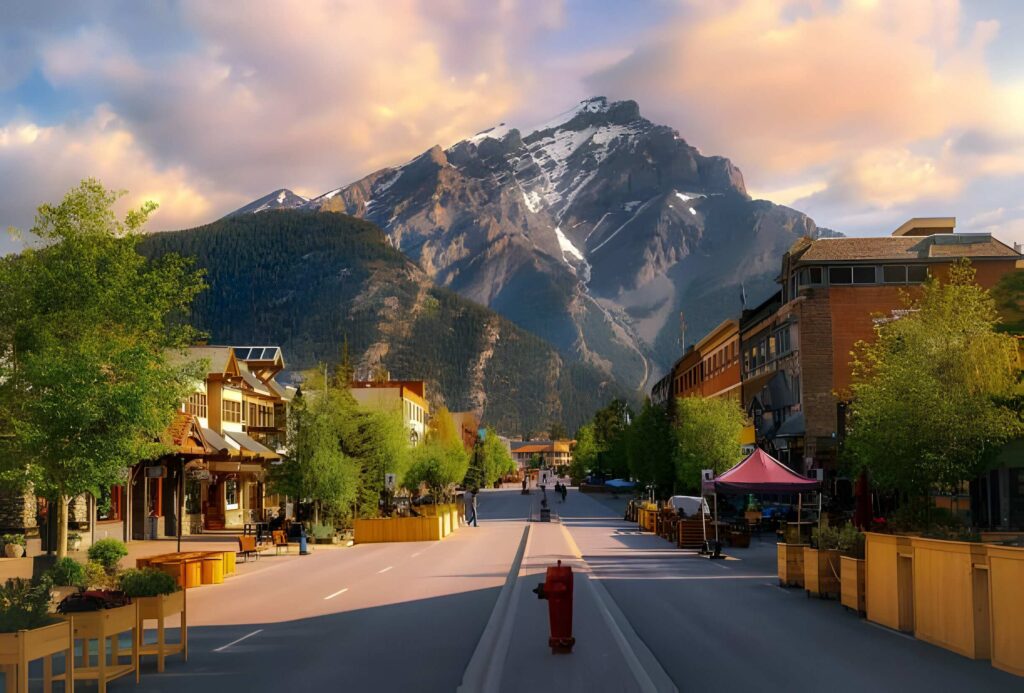 Pin
Pin Banff National Park is a stunning natural playground located in the Canadian Rockies. With its towering mountains, pristine lakes, and abundant wildlife, this picturesque park provides endless opportunities for stunning photography. From the iconic Lake Louise to the breathtaking Moraine Lake, Banff is a paradise for nature lovers and Instagrammers alike.
Banff National Park is a stunning natural wonder located in the Canadian Rocky Mountains in the province of Alberta. Established in 1885, it is Canada’s oldest national park and is a UNESCO World Heritage Site. The park covers an area of 6,641 square kilometers and is home to some of the most breathtaking scenery and diverse wildlife in the world.
One of the park’s most iconic features is the stunning Lake Louise, a glacial lake renowned for its turquoise waters and jaw-dropping mountain backdrop. Visitors can take a leisurely stroll around the lake or hike to the nearby Lake Agnes Tea House for a traditional afternoon tea experience. During the winter months, Lake Louise becomes a hub for winter sports enthusiasts, offering world-class skiing and snowboarding opportunities.
Another must-see attraction in Banff National Park is the picturesque town of Banff itself. Nestled amidst the mountains, the town offers a charming mix of shops, restaurants, and accommodations, making it an ideal base for exploring the surrounding wilderness. The Banff Upper Hot Springs are also a popular draw, providing a relaxing and rejuvenating experience with stunning views of the surrounding mountain peaks.
For those seeking adventure, Banff National Park offers an abundance of hiking and trekking opportunities. The park is crisscrossed with an extensive network of trails, ranging from easy walks suitable for all ages to challenging multi-day treks for experienced hikers. The Plain of Six Glaciers Trail and the Sentinel Pass Trail are particularly popular choices, offering stunning views of the surrounding mountains and glaciers.
Wildlife enthusiasts will also be delighted by the diverse range of animals that call Banff National Park home. The park is home to a wide variety of wildlife, including grizzly bears, black bears, elk, mountain goats, and bighorn sheep. Wildlife viewing opportunities are plentiful, and visitors are likely to encounter these magnificent creatures as they explore the park’s trails and scenic viewpoints.
In addition to its natural beauty, Banff National Park also holds cultural significance as the traditional territories of the Indigenous peoples of the region. The park is home to the Stoney, Kootenay, and Blackfoot First Nations, who have lived in the area for thousands of years. Visitors have the opportunity to learn about the rich cultural heritage of these Indigenous communities through interpretive programs and exhibits offered within the park.
The park’s geological features are equally as stunning as its natural beauty. Banff National Park is a land of towering mountain peaks, ancient glaciers, and turquoise lakes, all of which have been shaped by millions of years of geological processes. The park’s landscapes provide a glimpse into the powerful forces of nature that have sculpted the region over time and continue to shape it today.
Banff National Park also offers a variety of outdoor recreational opportunities, catering to a wide range of interests and skill levels. In addition to hiking and wildlife viewing, visitors can partake in activities such as mountain biking, rock climbing, fishing, and horseback riding. The park’s numerous rivers and lakes also provide ample opportunities for water-based activities, including canoeing, kayaking, and white-water rafting.
For those seeking a more leisurely experience, Banff National Park offers several scenic drives, allowing visitors to take in the park’s stunning landscapes from the comfort of their vehicle. The Icefields Parkway, which stretches for 230 kilometers between Lake Louise and Jasper, is especially renowned for its breathtaking views of mountain peaks, glaciers, and turquoise lakes.
Accommodations within Banff National Park range from luxurious mountain lodges to backcountry campsites, catering to a wide range of preferences and budgets. The park’s campgrounds provide an ideal opportunity to immerse oneself in the natural surroundings and enjoy the tranquility of the wilderness.
Banff National Park is a year-round destination, with each season offering its own unique attractions and opportunities for outdoor adventure. In the summer, the park comes to life with vibrant wildflowers, warm temperatures, and endless opportunities for outdoor recreation. Fall brings a stunning display of autumn foliage, while winter transforms the park into a winter wonderland, with opportunities for skiing, snowshoeing, and wildlife viewing in the snow-covered landscapes.
Banff National Park is a natural paradise that offers a wealth of natural beauty, outdoor adventure, and cultural richness. Whether visitors are seeking a challenging backcountry trek, a relaxing soak in a hot spring, or a scenic drive through the mountains, the park has something to offer for everyone. Its stunning landscapes, diverse wildlife, and rich cultural heritage make it a must-visit destination for nature lovers and outdoor enthusiasts from around the world.
Tokyo, Japan
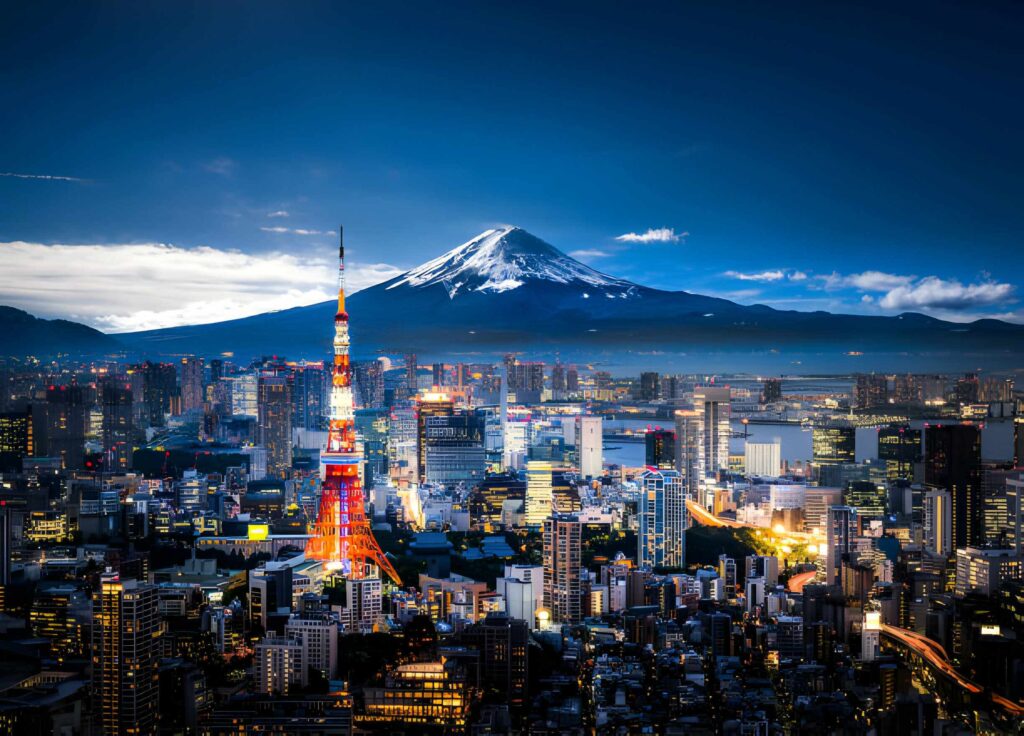 Pin
Pin Tokyo is a vibrant and bustling metropolis known for its futuristic skyscrapers, ancient temples, and vibrant street scenes. From the iconic Shibuya Crossing to the traditional gardens and shrines, the city offers a myriad of Instagram-worthy spots. Whether you capture the neon lights of Shinjuku or the serene landscapes of Mount Fuji, Tokyo is a city that is sure to leave a lasting impression on your Instagram followers.
Tokyo, the bustling capital city of Japan, is one of the most populous and vibrant cities in the world. Known for its high-tech infrastructure, cutting-edge fashion, and rich cultural heritage, Tokyo is a melting pot of modernity and tradition. With its towering skyscrapers, vibrant street fashion, and bustling entertainment districts, Tokyo is a city that never sleeps and offers something for everyone.
One of the first things that stands out about Tokyo is its skyline. The city is dominated by towering skyscrapers and futuristic architecture, giving it a modern and dynamic feel. The Tokyo skyline is particularly impressive at night when the city lights up, creating a breathtaking view that is unparalleled anywhere else in the world. A visit to Tokyo Tower or the Tokyo Skytree offers an opportunity to take in the stunning panoramic views of the city.
One of the most iconic images of Tokyo is its bustling street crossings, particularly the famous Shibuya Crossing. This massive intersection is a testament to the city’s energy and liveliness, as thousands of people cross the street at once, creating a mesmerizing spectacle. For many visitors, experiencing the hustle and bustle of Shibuya Crossing is an essential part of the Tokyo experience.
Tokyo is also known for its vibrant and diverse neighborhoods, each with its own unique charm and character. From the trendy fashion and shopping district of Harajuku to the historic and traditional streets of Asakusa, each neighborhood in Tokyo has its own distinct personality. A walk through the streets of Akihabara will reveal a world of electronics, anime, and manga, while a visit to the upscale district of Ginza will offer a glimpse of luxury and sophistication.
The city’s cultural heritage is well-preserved in its many temples, shrines, and historic sites. The Meiji Shrine, located in the heart of Tokyo, is one of the city’s most important cultural landmarks and a must-visit for anyone interested in Japanese history and tradition. The peaceful and serene atmosphere of the shrine provides a welcome respite from the hustle and bustle of the city.
For art enthusiasts, the Tokyo National Museum is a treasure trove of Japanese art and artifacts, showcasing the country’s rich artistic heritage. The museum’s extensive collection includes ancient ceramics, paintings, and sculptures, providing a comprehensive overview of Japan’s artistic traditions.
In addition to its cultural attractions, Tokyo is also a mecca for food lovers. The city is home to a dizzying array of restaurants, ranging from world-class sushi establishments to humble ramen shops and izakayas (traditional Japanese pubs). Tokyo’s culinary scene is incredibly diverse, offering everything from traditional Japanese cuisine to international fare. Tsukiji Market, the largest fish market in the world, is a must-visit for seafood aficionados, offering an abundance of fresh and delicious seafood.
Despite its modernity, Tokyo has managed to preserve its natural beauty through its many parks and green spaces. The expansive Yoyogi Park is a popular destination for locals and visitors alike, offering a peaceful retreat from the urban chaos. The park is particularly popular during the cherry blossom season, when the trees are in full bloom, creating a stunning display of pink and white blossoms.
One of the aspects that makes Tokyo a unique and captivating destination is its distinct blend of old and new. While the city is undeniably modern and innovative, it is also steeped in centuries of tradition and history. This duality is evident in everything from the city’s architecture to its cultural practices, creating a fascinating juxtaposition that makes Tokyo an endlessly intriguing city to explore.
Beyond its urban sprawl, Tokyo also serves as a gateway to the rest of Japan. From the city, travelers can easily access other parts of the country, including historic Kyoto, the natural beauty of Hokkaido, and the tropical paradise of Okinawa. Tokyo’s efficient and extensive transportation network makes it a convenient starting point for exploring the diverse landscapes and attractions that Japan has to offer.
Tokyo is a city that captivates and excites visitors with its vibrant energy, rich cultural heritage, and modern innovation. Whether you’re interested in exploring the city’s historic temples and shrines, indulging in its world-class culinary scene, or immersing yourself in its cutting-edge fashion and technology, Tokyo has something for everyone. With its unique blend of tradition and modernity, Tokyo is a city that is sure to leave a lasting impression on anyone who visits.
The Amalfi Coast, Italy
 Pin
Pin The Amalfi Coast is a stunning stretch of coastline in southern Italy, known for its colorful cliffside villages, azure waters, and dramatic coastal views. From the iconic town of Positano to the charming village of Ravello, this picturesque region is a treasure trove of Instagram-worthy spots. Whether you capture the stunning views from the Path of the Gods or the charming streets of Amalfi, the Amalfi Coast is a must-visit destination for any travel influencer.
The Amalfi Coast, located in the Campania region of Italy, is one of the most stunning and picturesque coastlines in the world. Stretching for about 50 kilometers along the southern edge of the Sorrentine Peninsula, the Amalfi Coast is a UNESCO World Heritage Site and has long been a popular destination for travelers seeking natural beauty, history, and culture.
The coastal road, known as the Amalfi Drive or the SS163, winds its way along the cliffs, offering breathtaking views of the Mediterranean Sea and the picturesque towns perched precariously on the steep slopes. The road is a feat of engineering, with hairpin turns and narrow passages that hug the coastline, making for an exhilarating and unforgettable drive. The towns along the coast are connected by this road, and each one has its own unique charm and character.
One of the most famous towns on the coast is Amalfi, from which the coastline takes its name. The town is a charming and bustling hub, with narrow streets, whitewashed buildings, and a magnificent cathedral that dominates the central piazza. The town has a long and storied history, having been a maritime powerhouse during the Middle Ages and a center for the production of fine paper. Visitors can explore the historic streets and alleys, visit the cathedral, and relax in one of the many cafes and restaurants that line the waterfront.
Another highlight of the Amalfi Coast is the town of Positano, known for its colorful and picturesque buildings cascading down the cliffs towards the sea. Positano has long been a popular retreat for artists, writers, and celebrities, drawn to its stunning beauty and relaxed atmosphere. The town is also known for its boutiques, where visitors can find unique fashion and local handicrafts. The beaches of Positano are also a major draw, with their clear turquoise waters and dramatic views of the cliffs.
Ravello, perched high above the coast, is another gem of the Amalfi Coast. This peaceful and tranquil town is known for its beautiful gardens, historic villas, and sweeping views of the coastline below. Ravello is also a cultural hub, with a long tradition of hosting music and arts festivals, attracting talent from all over the world.
The Amalfi Coast is also home to several smaller, lesser-known towns, each with its own charm and attractions. Maiori and Minori are known for their long sandy beaches and beautiful seafront promenades. Atrani is a quiet and charming village, with narrow alleyways and colorful buildings. Praiano is known for its peaceful atmosphere and stunning sunsets. These lesser-known towns offer a more authentic and intimate experience of the Amalfi Coast, away from the crowds of the more touristy destinations.
Aside from its towns, the Amalfi Coast is also home to numerous natural wonders. The coastline is dotted with hidden coves, secluded beaches, and crystal-clear waters that are perfect for swimming, snorkeling, and diving. The surrounding hills are covered with terraced vineyards, lemon groves, and olive orchards, producing some of the finest wine, limoncello, and olive oil in Italy. Hiking trails and footpaths wind their way through the rugged landscape, offering stunning vistas and the chance to explore the area’s natural beauty.
The cuisine of the Amalfi Coast is another major draw for visitors. The region’s cuisine is based on simple, fresh, and flavorful ingredients, reflecting the bounty of the sea and the fertile land. Local specialties include fresh seafood, handmade pasta, lemons, and mozzarella di bufala. The region is also known for its delicious pastries and desserts, such as sfogliatelle and delizie al limone. Visitors can savor these delights in local restaurants, trattorias, and gelaterias, or even learn to cook them in a cooking class.
The Amalfi Coast is a destination like no other, offering a perfect blend of natural beauty, history, culture, and cuisine. Whether exploring its charming towns, relaxing on its beaches, or savoring its delicious food, visitors are sure to be enchanted by this stunning and captivating coastline. With its sheer cliffs, sparkling seas, and picturesque towns, the Amalfi Coast is a place that will leave a lasting impression on all who visit.
Petra, Jordan
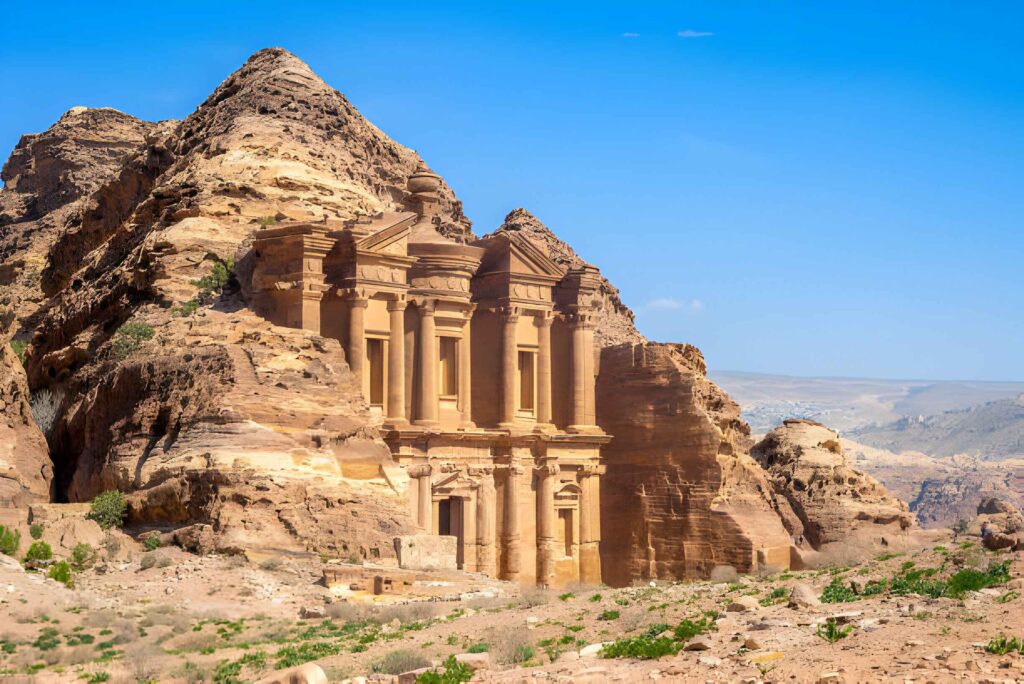 Pin
Pin Petra is an ancient city carved into the rose-red cliffs of southern Jordan, dating back to the 6th century BC. This UNESCO World Heritage site is famous for its iconic rock-cut architecture, including the breathtaking Treasury and the impressive Monastery. From exploring the narrow siq to witnessing the stunning views from the Al-Khubtha Trail, Petra offers countless opportunities for capturing some incredible Instagram photos.
Petra, also known as the “Rose City”, is a historical and archaeological city located in southern Jordan. It is one of the most famous and iconic archaeological sites in the world, and was designated as a UNESCO World Heritage Site in 1985. The city is famous for its rock-cut architecture, and it is a symbol of Jordan’s rich cultural heritage and history.
The history of Petra dates back to around 300 BC, when it was established as the capital city of the Nabateans, an ancient Arab tribe. The Nabateans were known for their advanced engineering and water management systems, and they built the city of Petra in the midst of the Jordanian desert. The city flourished as a major trade and commerce hub, serving as a crucial link between the East and the West.
One of the most iconic features of Petra is its rock-cut architecture, which includes elaborate tombs, temples, and other structures carved into the rose-colored sandstone cliffs. The most famous of these is the Treasury, or Al-Khazneh, which is the most well-known and photographed structure in Petra. The intricate carvings and decorative elements of the Treasury showcase the skill and artistry of the Nabatean craftsmen.
Another notable structure in Petra is the Monastery, or Ad-Deir, which is located at the top of a steep climb. The Monastery is larger than the Treasury and features a grand staircase leading up to its entrance. The interior of the Monastery is adorned with impressive carvings and architectural details, and it offers a breathtaking panoramic view of the surrounding desert landscape.
The city of Petra also features a number of other impressive structures, such as the Royal Tombs, the Roman Theater, and the Great Temple. Each of these buildings showcases the unique architectural style and craftsmanship of the Nabateans, and they offer a glimpse into the vibrant and sophisticated culture that once thrived in Petra.
In addition to its architectural wonders, Petra also boasts a rich and diverse history. The city was an important center of trade and commerce, and it was inhabited by diverse groups of people, including the Nabateans, Romans, and Byzantines. The city also played a significant role in the ancient spice and silk trade routes, and it was a strategic stronghold for many civilizations throughout history.
Today, Petra is one of Jordan’s most popular tourist destinations, attracting millions of visitors from around the world each year. The site is accessed through a narrow gorge known as the Siq, which is a stunning natural corridor flanked by towering cliffs. As visitors pass through the Siq, they are treated to the impressive sight of the Treasury, which emerges dramatically from the end of the gorge.
Once inside the city, visitors can explore the various structures and monuments, as well as take in the stunning natural beauty of the surrounding desert landscape. The site offers a range of hiking and walking trails, allowing visitors to explore the city at their own pace and take in its many wonders.
In recent years, efforts have been made to preserve and protect Petra from the effects of tourism and natural elements. Conservation projects have been undertaken to stabilize and restore the ancient structures, and sustainable tourism practices have been implemented to ensure the long-term preservation of the site.
In addition to its historical and cultural significance, Petra also holds a special place in popular culture. The city gained widespread fame after it was featured in the 1989 film “Indiana Jones and the Last Crusade,” in which it served as the fictional location of the Holy Grail. The iconic imagery of the Treasury and the surrounding desert has since become synonymous with adventure and exploration.
Petra, Jordan, is a timeless and awe-inspiring destination that continues to capture the imagination of travelers and scholars alike. Its remarkable rock-cut architecture, rich history, and stunning natural beauty make it a must-see destination for anyone with an interest in ancient civilizations and archaeological wonders. A visit to Petra is a journey back in time, offering a glimpse into the splendor and grandeur of one of the ancient world’s most remarkable cities.
Bora Bora, French Polynesia
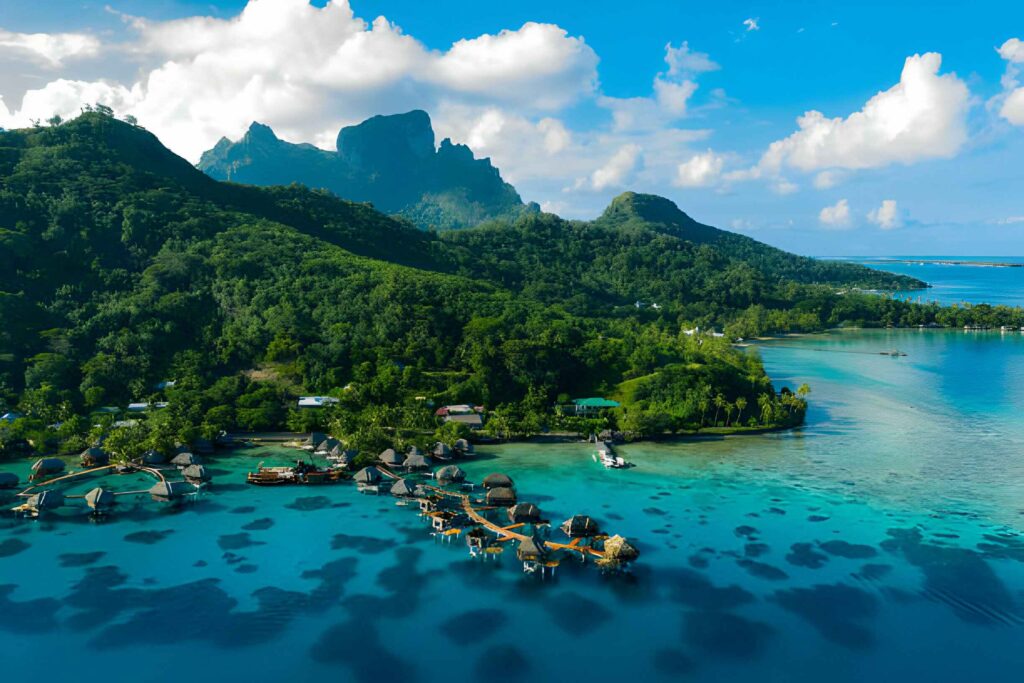 Pin
Pin Bora Bora is a stunning island in the South Pacific known for its overwater bungalows, crystal-clear lagoon, and lush tropical landscapes. With its pristine beaches, vibrant coral reefs, and stunning sunsets, Bora Bora is a paradise for any travel influencer looking to showcase the beauty of a tropical paradise. Whether you capture the iconic Mount Otemanu or the vibrant marine life, Bora Bora is sure to add some stunning photos to your Instagram feed.
Bora Bora, French Polynesia, is undoubtedly one of the most stunning destinations in the world. This small island in the South Pacific is known for its crystal-clear turquoise waters, white sandy beaches, and lush green mountains. It is a popular honeymoon and luxury travel destination, attracting visitors from all over the world who come to experience its natural beauty and luxury resorts.
Bora Bora is located about 160 miles northwest of Tahiti and is part of the Society Islands in French Polynesia. The island is surrounded by a barrier reef and a lagoon, creating the perfect conditions for snorkeling, scuba diving, and other water activities. The main town of Vaitape is where most of the island’s restaurants and shops are located, and it is also the arrival point for most visitors.
The island is home to a variety of luxury resorts and overwater bungalows, which are famous for their stunning views and luxurious amenities. These overwater bungalows offer a unique and romantic accommodation option, allowing guests to stay right on the water and enjoy the beauty of the surrounding lagoon. Many of the resorts also offer a range of activities and excursions, including guided snorkeling tours, sunset cruises, and Polynesian cultural experiences.
One of the most popular activities on Bora Bora is snorkeling and scuba diving. The island’s lagoon is home to a diverse range of marine life, including colorful coral reefs, tropical fish, and even the occasional shark or manta ray. There are several popular dive sites around the island, including the famous Tapu dive site, known for its impressive array of underwater creatures and coral formations. Snorkeling is also a popular pastime, and many resorts provide equipment and guided tours to help guests explore the underwater world.
In addition to water activities, Bora Bora also offers a range of adventures on land. The island is home to several hiking trails, including one that leads to the summit of Mount Otemanu, the highest point on the island. This challenging hike rewards visitors with breathtaking views of the surrounding lagoon and reef, as well as the chance to see native bird species and lush tropical vegetation. Other popular land activities on the island include 4×4 tours, bicycle rentals, and guided cultural tours.
One of the best ways to experience Bora Bora is by taking a boat tour of the lagoon. Many resorts offer guided tours that take visitors to popular snorkeling spots, secluded beaches, and even the nearby “motus,” or small islets that dot the lagoon. These tours often include a traditional Polynesian lunch and the chance to learn about the local culture and history from knowledgeable guides. Some boat tours even offer the opportunity to swim with sharks and stingrays, providing a truly unforgettable experience for visitors.
The culture of the people of Bora Bora is a rich and vibrant one, with a strong emphasis on traditional music, dance, and crafts. Visitors to the island have the opportunity to experience authentic Polynesian performances, such as fire dancing and drumming, as well as learn about the history and traditions of the local people. Many resorts on the island offer cultural demonstrations and workshops, allowing guests to try their hand at traditional crafts such as weaving and tattooing.
The food on Bora Bora is also a highlight of any visit to the island. The cuisine of French Polynesia is a unique blend of French, Polynesian, and Asian flavors, with an emphasis on fresh seafood, tropical fruits, and local vegetables. Visitors can sample a wide range of dishes, from traditional Polynesian fare such as poisson cru (a raw fish salad) to fine dining experiences at the island’s luxury restaurants. Many resorts also offer themed dining nights, where guests can enjoy Polynesian buffets, beachside barbecues, and romantic dinners under the stars.
A visit to Bora Bora is an experience unlike any other. From its natural beauty and luxury resorts to its vibrant culture and delicious cuisine, the island offers something for every type of traveler. Whether you are looking for a romantic honeymoon destination, a luxury retreat, or an adventure-packed vacation, Bora Bora has it all. With its stunning landscapes, warm and welcoming people, and endless opportunities for relaxation and adventure, Bora Bora is a destination that will leave a lasting impression on anyone who is lucky enough to visit.
The Great Wall of China
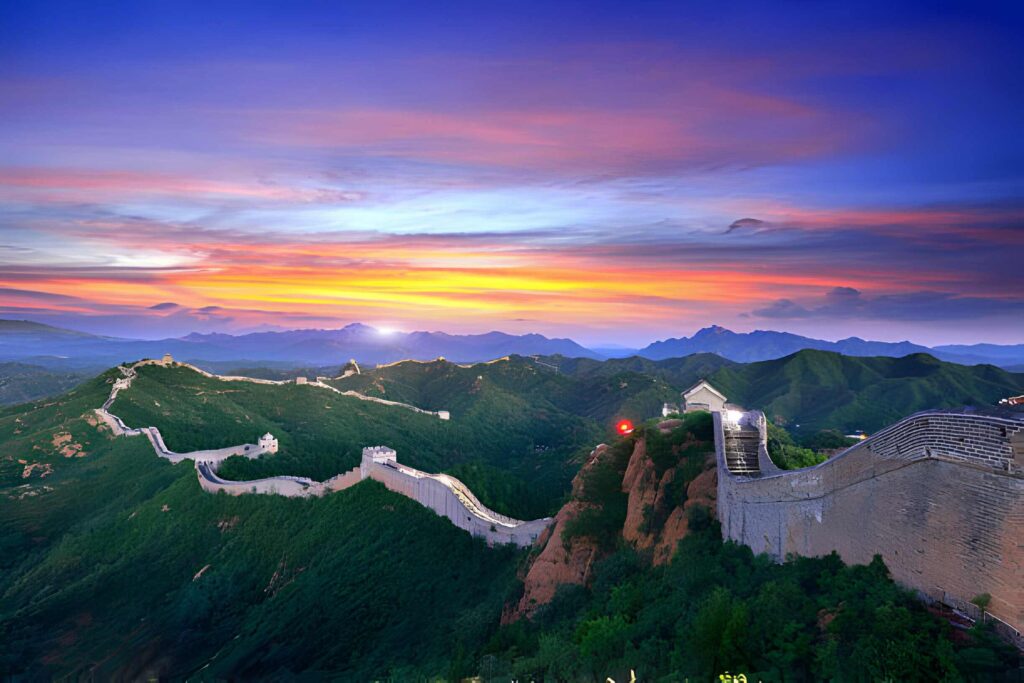 Pin
Pin The Great Wall of China is one of the most iconic landmarks in the world, spanning over 13,000 miles across northern China. This UNESCO World Heritage site offers incredible opportunities for capturing stunning photos, from the panoramic views of the wall snaking across the mountains to the iconic watchtowers and fortifications. Whether you hike along the wall or visit the popular sections near Beijing, the Great Wall is a must-visit destination for any travel influencer looking to capture some breathtaking Instagram photos.
The Great Wall of China is an incredible feat of human engineering and one of the most iconic landmarks in the world. It stretches over 13,000 miles and has been a symbol of Chinese strength and cultural heritage for centuries. The wall is much more than an architectural wonder; it has also played a significant role in the country’s history, serving as a defense against invaders, a trade route, and a boundary marker.
The wall was originally built as a series of smaller walls by various Chinese states during the 7th century BC. However, it was not until the 3rd century BC that the first emperor of China, Qin Shi Huang, ordered the construction of a unified and formidable barrier to protect his empire from the northern tribes. This early version of the wall was made primarily of rammed earth and served as an effective defense against marauding nomadic tribes.
Over the centuries, the wall was constantly expanded and reinforced by subsequent dynasties, including the Han, Ming, and Qing. The Ming Dynasty, in particular, is credited with building much of the wall that we recognize today. During their rule in the 14th and 15th centuries, the Ming Dynasty made significant upgrades to the wall, adding brick and stone to the construction and building formidable watchtowers and fortifications along its length.
The Great Wall was not only a protective barrier; it was also a vital artery for trade and communication. The wall facilitated the movement of goods and people, and it also served as a military road for the garrisons that guarded its length. From the Wall, caravans of camels carried silk, porcelain, and other luxury goods from China to the West, while ideas, technology, and culture flowed in the opposite direction. The Great Wall thus became a conduit for the exchange of goods, ideas, and culture between the East and the West.
The Great Wall also served as a symbol of Chinese civilization and strength. It was an imposing structure that demonstrated the power and might of the emperor and his empire. The wall was intended to intimidate potential invaders and emphasize the superiority of Chinese civilization; as such, it became synonymous with the cultural and historical identity of China.
Today, the Great Wall of China is a UNESCO World Heritage Site and one of the most visited tourist attractions in the world. Its historical significance, architectural grandeur, and breathtaking views make it a must-see destination for travelers from around the globe. The wall’s popularity has led to concerns about preservation, but efforts to protect and restore this ancient monument are ongoing.
Visitors to the wall are able to hike along various sections, each offering its own unique perspective and challenges. Some parts of the wall are well-preserved, while others have fallen into disrepair. The most popular section for tourists is at Badaling, which is easily accessible from Beijing and offers stunning panoramic views of the wall snaking its way across the mountainous terrain. Other popular sections include Mutianyu, Jinshanling, and Simatai, all of which offer a mix of restored and wilder, more rugged stretches of the wall.
Walking along the Great Wall of China is an awe-inspiring experience, offering a glimpse into the country’s past and an appreciation for the incredible human effort that went into its construction. The sheer magnitude of the wall’s size and the beauty of its surroundings are truly breathtaking, and visitors cannot help but be impressed by the architectural and engineering marvel that it represents.
The Great Wall of China has become not only a symbol of China’s past, but also a testament to the enduring spirit and determination of the human race. It stands as a reminder of the lengths to which people will go to protect their way of life and how a structure built for defense can ultimately become a source of inspiration for people around the world.
Conclusion
The world is full of stunning and Instagram-worthy travel destinations just waiting to be explored. Whether you’re looking for pristine beaches, ancient ruins, lush landscapes, or vibrant city scenes, there is no shortage of incredible places to visit and photograph. From the iconic landmarks of Machu Picchu and Petra to the picturesque landscapes of Bali and Banff, the possibilities for stunning Instagram photos are endless. So start planning your next adventure and get ready to capture some envy-inducing photos for your Instagram feed.






















